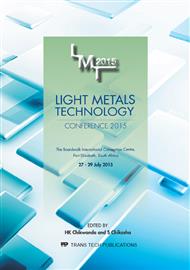p.43
p.48
p.53
p.58
p.62
p.69
p.73
p.78
p.82
Form Accuracy of Optical Mould Inserts Made from Rapidly Solidified Aluminium Alloys
Abstract:
Plastic optical components and lenses produced in mass quantities are usually manufactured using high-precision plastic injection technology. For that, high-precision plastic moulds with aluminium optical inserts made with extremely high dimension accuracy and high optical surface quality are used. Ultra-high precision single-point diamond turning have been successfully used in shaping optical mould inserts from various aluminium grades such as traditional 6061. However, extreme care should be taking when selecting machining parameters in order to produce optically valid surfaces before premature tool wear takes place especially when the machined optical materials has inadequate machining database. The current experimental study looks at the effect of cutting conditions on optical surfaces made from aluminium. The study embarks on helping establish some diamond machining database that helps engineers select the most favourable cutting parameters. The papers reports on the accuracy and surface finish quality received on an optical surface made on mould inserts from a newly developed aluminium alloy. Rapidly solidified aluminium (RSA) grades have been developed recently to address the various problems encountered when being cut by single-point diamond turning operation. The material is characterised by its extremely fine grained microstructure which helps extend the tool life and produce optical surfaces with nanometric surface finish. It is found the RSA grades can be successfully used to replace traditional optical aluminium grades when making optical surfaces. Surface finishes of as low as 10 nanometres and form accuracy of less than one micron can be achieved on RSA.
Info:
Periodical:
Pages:
62-68
Citation:
Online since:
August 2015
Authors:
Price:
Сopyright:
© 2015 Trans Tech Publications Ltd. All Rights Reserved
Share:
Citation:


